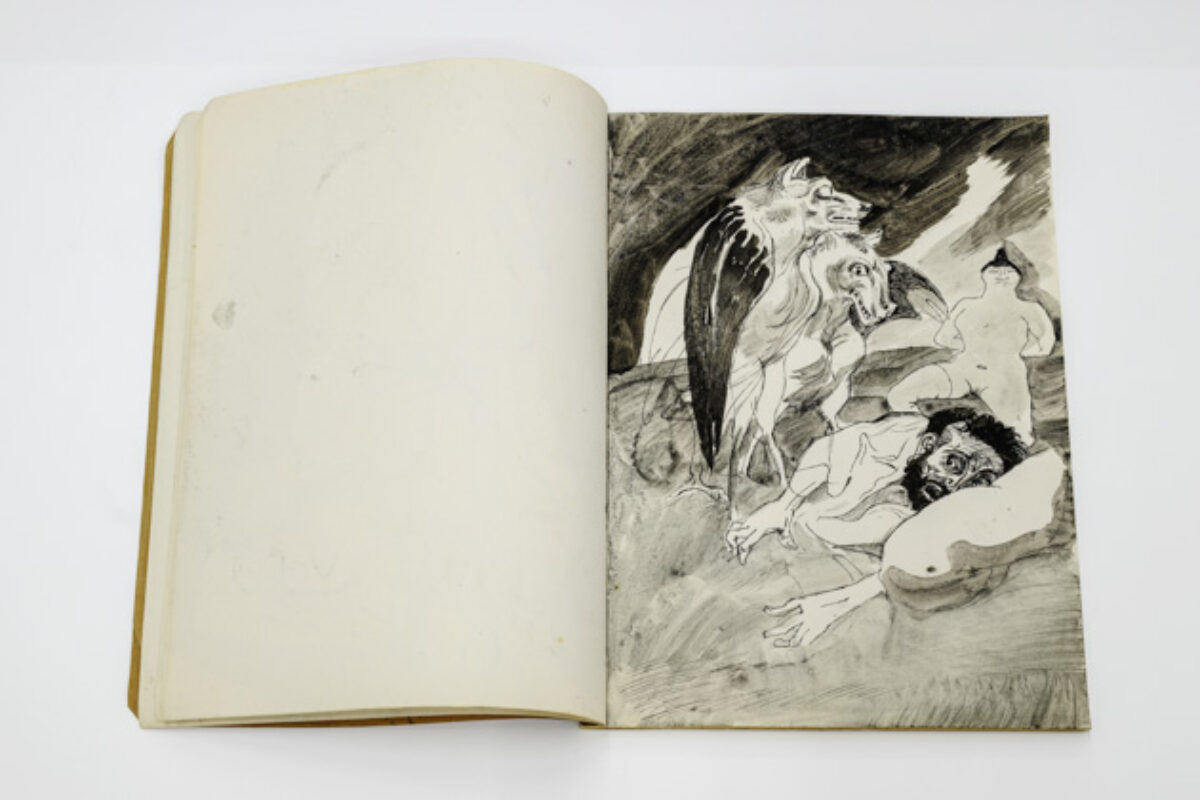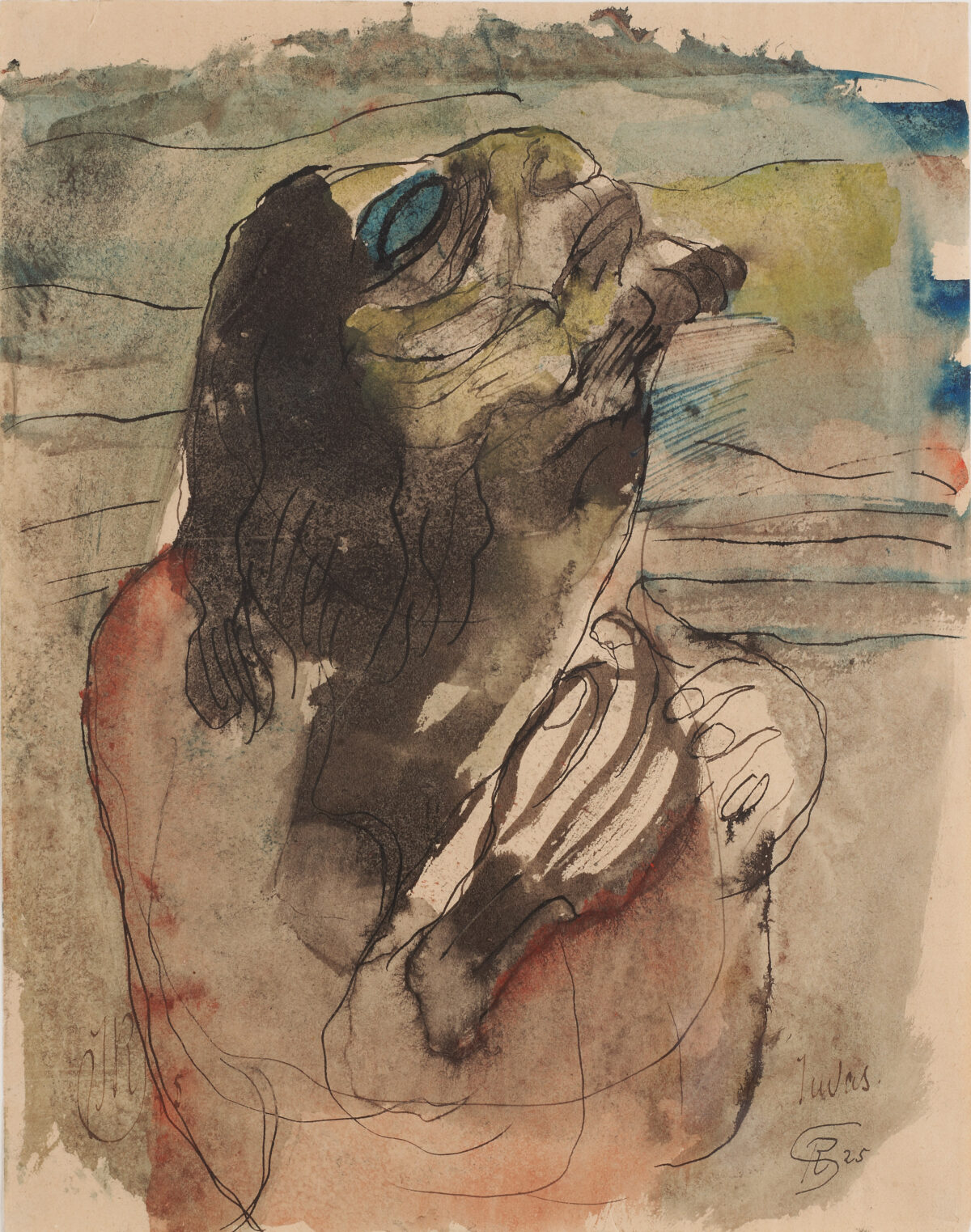Johannes Robert Schürch
See all
Who was Johannes Robert Schürch (1895 – 1941)? The Aargauer Kunsthaus explores this question in a subtle and multifaceted exhibition. It attempts to bring the artist out of oblivion as one of the protagonists of early modernism in Switzerland.
By Angelika Affentranger-Kirchrath
 i
i
14.9.2024 – 12.1.2025, Aargauer Kunsthaus
Foto: René Rötheli, Baden
My first encounter with the artist’s work dates back to the time when I was curating for the Werner Coninx Museum in Zurich. Together with the contemporary artist Rémy Markowitsch, I examined and ‘scrutinised’ the huge collection in the exhibition Spirit (2005). There was also a bundle of works on paper by Johannes Robert Schürch. We showed these alongside drawings and prints by Fritz Pauli and Ignaz Epper. We called the museum wall dedicated to these three kindred artists the Dark Wall. The dark tones and the threatening mood were the defining elements. The works by Johannes Robert Schürch made the most direct and lasting impression on me.
 i
i
14.9.2024 – 12.1.2025, Aargauer Kunsthaus
Johannes Robert Schürch (1895 - 1941), Mich selbst, 1926
Tusche laviert auf Papier, 27.5 × 19.9 cm
Privatsammlung Zürich
Johannes Robert Schürch (1895 - 1941), Selbstbildnis, 1925
Öl auf Pavatex, 60 × 49 cm
Aargauer Kunsthaus / Schenkung der Sophie und Karl Binding-Stiftung
Johannes Robert Schürch (1895 - 1941), Selbstportrait, um 1925
Grafitstift und Tusche (Pinsel) auf Papier, 27 × 21 cm
Kunstbaus Zürich, Grafische Sammlung, Geschenk von Erica Ebinger-Leutwyler, 1986.
Foto: René Rötheli, Baden
I have now rediscovered some of them in the comprehensive exhibition at the Aargauer Kunsthaus. Here too, Schürch’s drawings and watercolours are dark-toned and full of melancholy. The artist’s perception of the world was also sombre. He was born in Aarau in 1895. His family moved to Geneva at an early age. There, years later, he became an assistant to Ferdinand Hodler, who influenced his style. He portrayed the master on his deathbed. Like Hodler, Schürch also experienced the omnipresence of death. As a child, he also lost his father and two of his siblings. As if he had anticipated his own early demise – he died at the age of 46 – death is constantly present in his work, whether explicitly in the form of a skull or merely hinted at as a black shadow. In a late self-portrait, the boundaries between his face, emaciated by tuberculosis, and the skull blur – together they look at the viewer as if from a strange world.
 i
i
14.9.2024 – 12.1.2025, Aargauer Kunsthaus
Foto: René Rötheli, Baden
In other works, the confrontation with dying appears like a dance with death, as an attempt to escape it despite hardship and misery. The artist recognised the only possibility for this in the tender closeness of two people to each other. The couples are both the vanishing point and the fixed star in this work.
 i
i
Tusche (Feder) laviert auf Papier, 27.3 × 21.3 cm
Kunsthaus Zürich, Grafische Sammlung, Geschenk von Erica Ebinger-Leutwyler, 1986
Foto: Kunsthaus Zürich, Grafische Sammlung
The most important part of his oeuvre, the so-called ‘spontaneous drawings’, was created between the 1920s and 1930s. As if swept along by a current, ideas and conceptions appear and disappear. Seemingly at random, they take on a provisional form in washed ink drawings or watercolours on small-format paper.
The exhibition title See all, inspired by Dieter Roth, needs to be relativised. For Schürch, “All” refers less to the external visible world and more to the inner reality with its invisible world contexts. Schürch hardly ever travelled. He lived for a long time with his mother in a forest house above Locarno-Monti that had been converted into a studio. Here he studied art from various eras and read a lot – in addition to literature and poetry, he was also interested in astrology and graphology.
 i
i
14.9.2024 – 12.1.2025, Aargauer Kunsthaus
Johannes Robert Schürch (1895 - 1941), Skizzenbuch 45 (SB45), o. J.
Tusche (Feder) und Farbkreide auf Papier, 33.7 × 24.7 cm
Erica Ebinger-Leutwyler Stiftung, Nachlass Johannes Robert Schürch
Foto: René Rötheli, Baden
The Bible was one of his most important sources of inspiration. He was probably referring to the apostle John when he gave himself the additional first name. And like the evangelist, his visions also have something of the prophecies of the Apocalypse. Visions of the end times chase each other like the clouds in the troubled sky and the horses emaciated to carcasses. Like the trees, people are bent and twisted by their fate. Most of them are people on the margins of society. Poverty and hardship level their appearance and take away their individuality. They are always shown as sober and distanced. As a kind of ecce homo.
At the entrance to the exhibition, we are greeted by a photograph of the artist balancing high on a pole and looking calmly towards us. It is a characteristic portrait, because it is probably true: throughout his short life, this artist was a tightrope walker over the abyss and a border crosser between the outer and inner worlds.
The careful exhibition scenography not only makes the melancholy aura of the works bearable, it also lends them a poetic quality that enchants the viewer. The bright wall colours in soft ochre, light blue and lively red combine the rooms to create a unified experience and allow Schürch’s works to be experienced as a cosmos of their own.
Angelika Affentranger-Kirchrath lives and works as a freelance curator and art publicist in Zurich.
(Translated with DeepL.com/Translator)
 i
i
14.9.2024 – 12.1.2025, Aargauer Kunsthaus
Foto: René Rötheli, Baden
